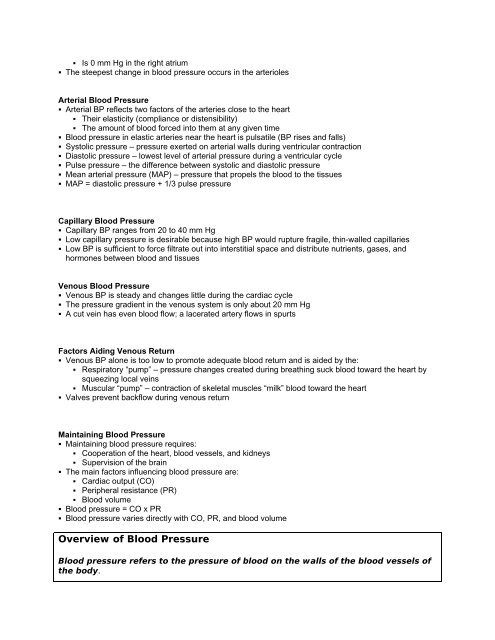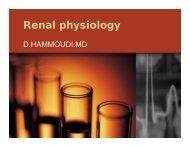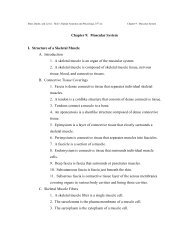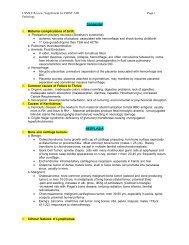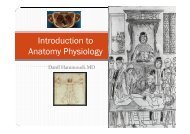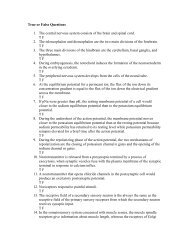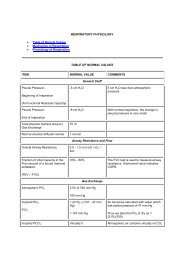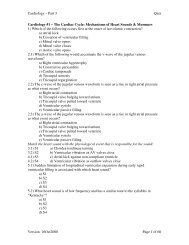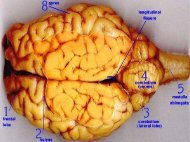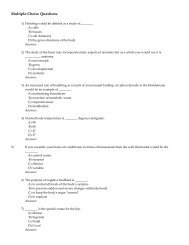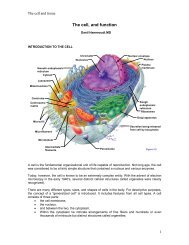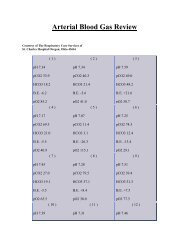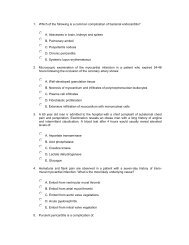Blood Vessels - Sinoe medical homepage.
Blood Vessels - Sinoe medical homepage.
Blood Vessels - Sinoe medical homepage.
Create successful ePaper yourself
Turn your PDF publications into a flip-book with our unique Google optimized e-Paper software.
• Is 0 mm Hg in the right atrium• The steepest change in blood pressure occurs in the arteriolesArterial <strong>Blood</strong> Pressure• Arterial BP reflects two factors of the arteries close to the heart• Their elasticity (compliance or distensibility)• The amount of blood forced into them at any given time• <strong>Blood</strong> pressure in elastic arteries near the heart is pulsatile (BP rises and falls)• Systolic pressure – pressure exerted on arterial walls during ventricular contraction• Diastolic pressure – lowest level of arterial pressure during a ventricular cycle• Pulse pressure – the difference between systolic and diastolic pressure• Mean arterial pressure (MAP) – pressure that propels the blood to the tissues• MAP = diastolic pressure + 1/3 pulse pressureCapillary <strong>Blood</strong> Pressure• Capillary BP ranges from 20 to 40 mm Hg• Low capillary pressure is desirable because high BP would rupture fragile, thin-walled capillaries• Low BP is sufficient to force filtrate out into interstitial space and distribute nutrients, gases, andhormones between blood and tissuesVenous <strong>Blood</strong> Pressure• Venous BP is steady and changes little during the cardiac cycle• The pressure gradient in the venous system is only about 20 mm Hg• A cut vein has even blood flow; a lacerated artery flows in spurtsFactors Aiding Venous Return• Venous BP alone is too low to promote adequate blood return and is aided by the:• Respiratory “pump” – pressure changes created during breathing suck blood toward the heart bysqueezing local veins• Muscular “pump” – contraction of skeletal muscles “milk” blood toward the heart• Valves prevent backflow during venous returnMaintaining <strong>Blood</strong> Pressure• Maintaining blood pressure requires:• Cooperation of the heart, blood vessels, and kidneys• Supervision of the brain• The main factors influencing blood pressure are:• Cardiac output (CO)• Peripheral resistance (PR)• <strong>Blood</strong> volume• <strong>Blood</strong> pressure = CO x PR• <strong>Blood</strong> pressure varies directly with CO, PR, and blood volumeOverview of <strong>Blood</strong> Pressure<strong>Blood</strong> pressure refers to the pressure of blood on the walls of the blood vessels ofthe body.


